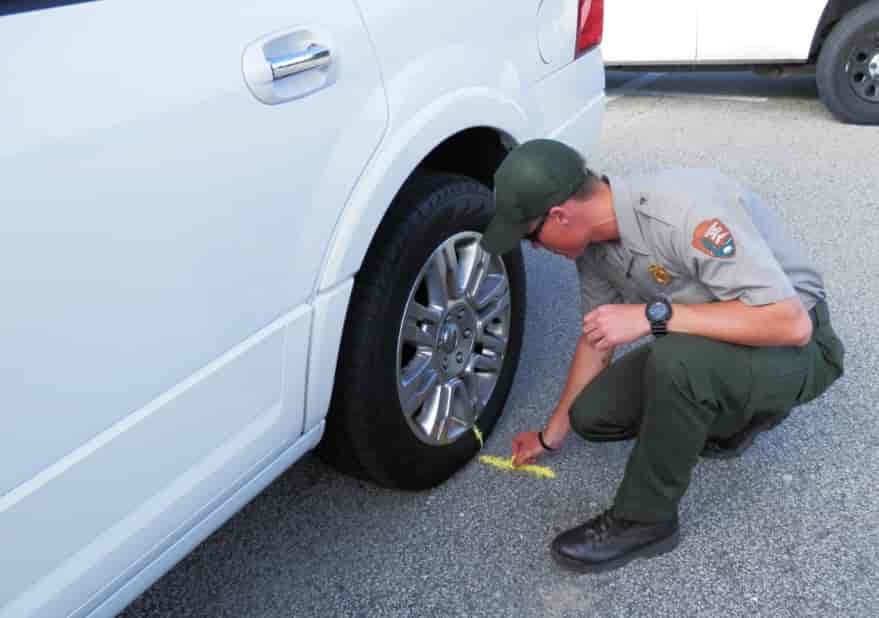Tire Chalking for Parking Reinforcement
The act of tire chalking for parking reinforcement involves marking a car’s tires using chalk to determine the time for which it remains parked in a parking spot. This practice has become a matter of dispute in courts, not once but twice.
Back in April 2019, a three-judge panel in Cincinnati unanimously agreed that Saginaw’s heavy practice of marking tires to impose time limits on parking is akin to trespassing and, therefore, unconstitutional as per the Fourth Amendment.
The same matter was raised in August 2021, where the judges’ ruling stated that “for nearly as long as automobiles have parked along city streets, municipalities have found ways to enforce parking regulations without implicating the Fourth Amendment.”
However, those in favor of tire chalking feel that this is nothing but Saginaw’s cumulative effort to curb parking violations which seem to skyrocket with time.This brings us to the big question – to chalk or not to chalk? Let’s discuss it in a little more detail.
What Is Tire Chalking?
A more manual method of parking reinforcement, tire chalking, is about using chalk to mark the tires of every vehicle within a specific parking lot. Once the time limit is over, the parking enforcer or officer comes back to the lot to see if any of the marked vehicles are still parked. Those that remain will be issued a parking ticket for the violation.
What are the main drawbacks of this practice?
A court dispute regarding the practice being unconstitutional is not the only problem associated with the practice of tire chalking. Some other problem areas are –
- The chalk marks can easily be washed away by rain or snow.
- If a car owner is familiar with this method of tire chalking for parking reinforcement, they might simply wipe off the mark or even move their car to hide it.
- If the parking enforcers patrol for more than a single cycle, they could end up marking the same car again, which may come across as intrusive.
Also Read: The Evolving Role of Parking Enforcement Officers in Transportation
Automated alternatives that tackle tire-chalking problems
Tire chalking may or may not have proven to be successful over the years, but automated parking reinforcement tools such as License Plate Recognition (LPR) technology resolves the drawbacks associated with this practice.
Instead of manual chalking of the tires, LPR finishes the process digitally, hence the term “digital tire chalking” or “allowance timing.” Not only that, but LPR also makes the entire process contactless, so that’s an added benefit.
Under this technology, all that parking enforcers need to do is scan a license plate. This logs the respective vehicle into a centralized database. In case a license plate is scanned and is found beyond the time limit, the databasewill notify the officer of the same, and the vehicle in question will be issued a parking ticket.
To chalk or not to chalk, then?
When smart automated solutions such as License Plate Recognition (LPR) exist, there’s no need to manually chalk the tires. This will not only save time and energy for parking enforcers but also spare another court hearing.

